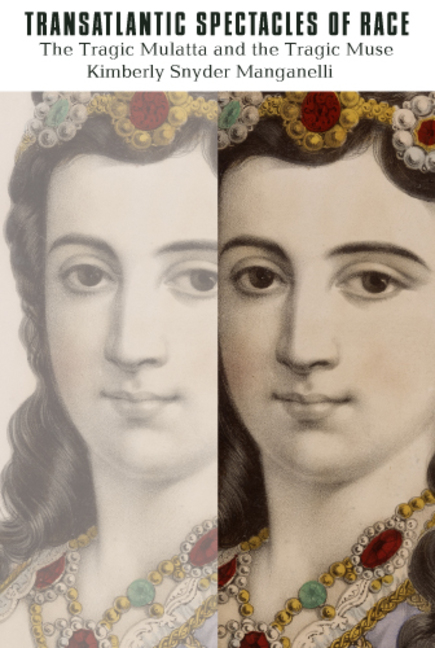Transatlantic Spectacles of Race: The Tragic Mulatta and the Tragic MusePosted in Books, Literary/Artistic Criticism, Media Archive, Monographs, United Kingdom, United States, Women on 2011-07-02 04:45Z by Steven |
Transatlantic Spectacles of Race: The Tragic Mulatta and the Tragic Muse
Rutgers University Press
2012-02-28
256 pages
Paper ISBN: 978-0-8135-4988-0
Cloth ISBN: 978-0-8135-4987-3
Kimberly S. Manganellia, Associate Professor of 19th-Century British and American Literature
Clemson University, Clemson, South Carolina
The tragic mulatta was a stock figure in nineteenth-century American literature, an attractive mixed-race woman who became a casualty of the color line. The tragic muse was an equally familiar figure in Victorian British culture, an exotic and alluring Jewish actress whose profession placed her alongside the “fallen woman.”
In Transatlantic Spectacles of Race, Kimberly Manganelli argues that the tragic mulatta and tragic muse, who have heretofore been read separately, must be understood as two sides of the same phenomenon. In both cases, the eroticized and racialized female body is put on public display, as a highly enticing commodity in the nineteenth-century marketplace. Tracing these figures through American, British, and French literature and culture, Manganelli constructs a host of surprising literary genealogies, from Zelica to Daniel Deronda, from Uncle Tom’s Cabin to Lady Audley’s Secret. Bringing together an impressive array of cultural texts that includes novels, melodramas, travel narratives, diaries, and illustrations, Transatlantic Spectacles of Race reveals the value of transcending literary, national, and racial boundaries.
